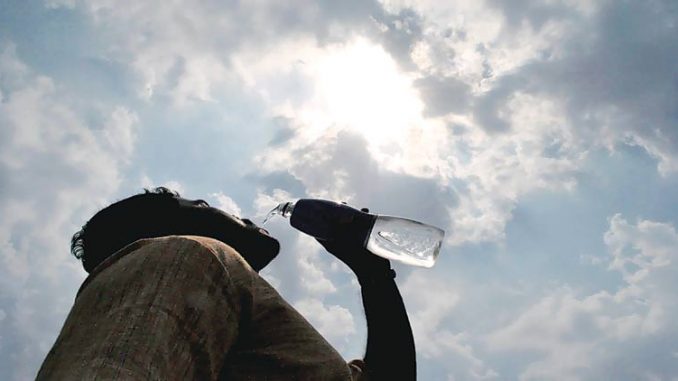
The India Meteorological Department (IMD) says the country is on an average 0.6 degree Celsius hotter than a century ago. 2016 was the warmest year since 1901. Until 2015, 13 of India’s 15 warmest years ever were after 2000. Heat waves are a sharply defined concept, as per Indian meteorology. Depending on whether a place’s historical temperature is 40C or less, a 4.5C (or greater) rise in temperature counts as a ‘heat wave’ and 6.5C and more, a ‘severe heat wave.’ The IMD counted the number of heat wave days in 110 weather stations nationwide and, in a 2013 report, found that between 1960 and 2010, there were about 510 ‘heat wave days’ every year in the decades 1961-70 and 1971-80. This decreased to 470 in (1981-90) and jumped to about 580 days/year and 670 days/year respectively in the decades (1991-00 and 2001-10). The same roughly holds for severe heat waves. From an average 74 days/year in the 1961-70 decade, it has jumped to 98 days/year in the last decade (2001-2010). Given that the last decade was the hottest, these numbers would likely be higher when re-tabulated after 2020.
What’s causing the spike?
The general answer would be global warming, but ‘how’ isn’t clear. All statistics on heat waves listed above refer to trends between March and June, but there’s no evidence that there are more heat waves in March as opposed to April or May. Studies have linked an increase in heat waves to more increase in El Nino events, or years marked by an anomalous heating in the Central Pacific Ocean that’s linked to a weakening of the Indian monsoon. Particularly, years succeeding an El Nino event are said to be linked to heat waves and mortality. “…The number of deaths related to heat waves in years following the El Nino years (1983, 1988, 1995, 1998, 2003, 2005 and 2010) were more than during the El Nino years,” says a 2000 study by S.K. Chaudhury. Moreover, during eight of the 11 El Nino years (1961-2010), the all-India heat wave days were above what is normal.
The Indian Ocean temperatures are also rising faster than the other oceans, and this, too, may be reducing moisture over the Indian mainland, thus playing some part in longer stretches of hot days. Deforestation, the heat-island effect, and industrial pollution are also being blamed for exacerbating heat waves.
Typically, heat waves are associated with the north and northwest of India and over coastal Andhra Pradesh, north Odisha and parts of West Bengal. However, there’s been a slight increase in the number of regions in recent years, with more parts of the Himalayan plains, regions north of Andhra Pradesh and Central India also registering more heat waves. This year, the maximum spikes in temperatures, in May, were recorded in unconventional places such as Shimla, Kullu and tourist spots in Uttarakhand.
How do heat waves affect us?
Prolonged exposure can cause dehydration and sometimes death. Heat waves killed 1,422 in Andhra Pradesh and 541 in Telangana in 2015 or about 90% of all the heat wave mortality of that year. The next year, deaths halved because of several initiatives by the government, including early-warnings and improved public access to drinking water. Staying indoors during a heat wave is the best way to be safe.
Source: The Hindu

Leave a Reply